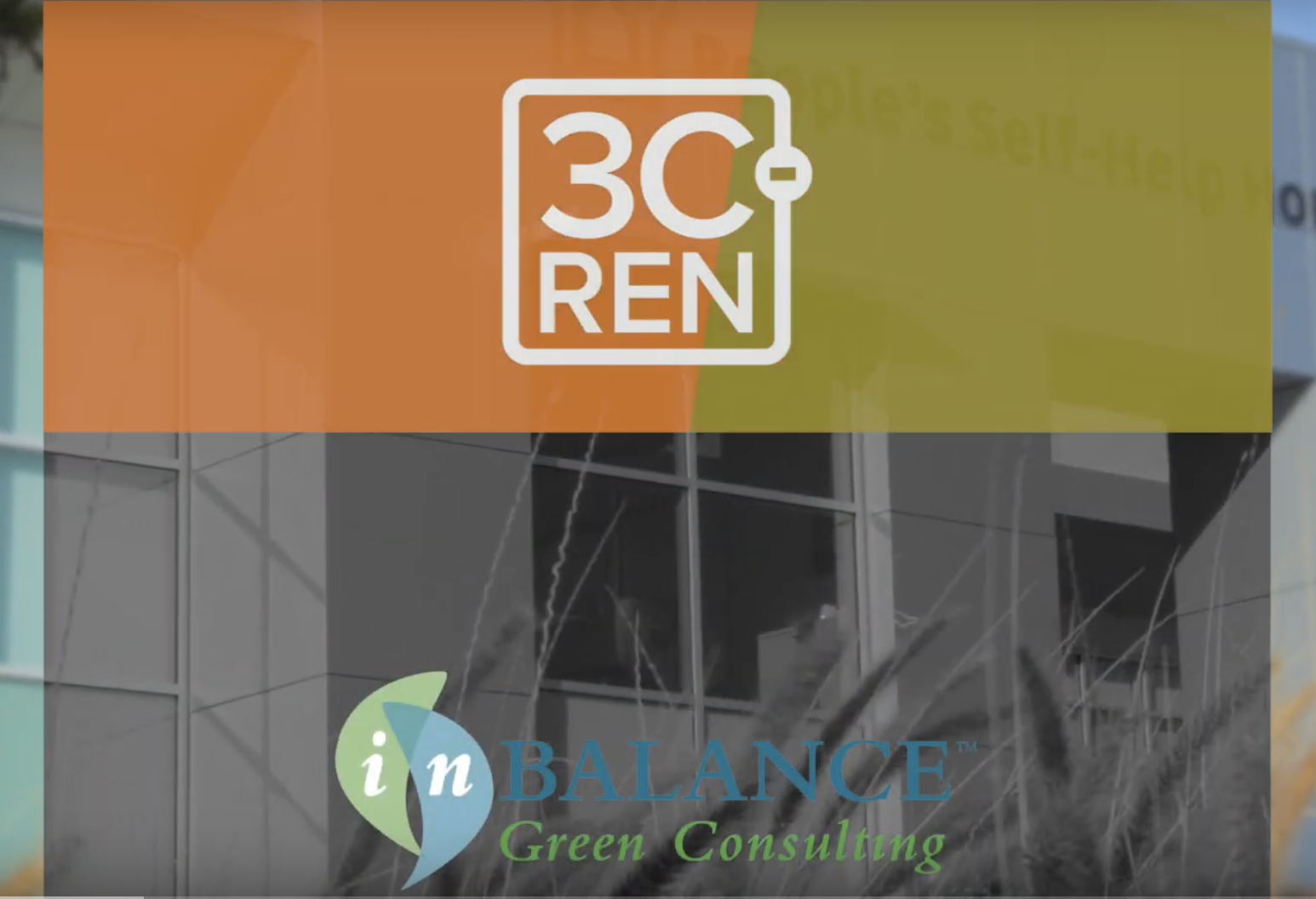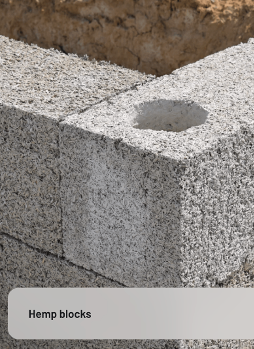Would you like to see inside an all-electric, Zero Net Energy commercial building, right here on the Central Coast? In this 3-minute video we walk through People’s Self-Help Housing’s new 24,000 SF headquarters located in San Luis Obispo. In the video we highlight the heat pump systems for heating, cooling and hot water, take in a roof-top view of the 115 kW photovoltaic array, and wrap up with lighting and all-electric appliances. Enjoy!
Upcoming Courses on HERS, Envelope Detailing and Energy Code Implementation
We’re pleased to continue offering in-person and online classes through 3C-REN. Here are a few of the upcoming courses:
ENERGY CODE COMPLIANCE: USING HERS MEASURES (PART 2)
Wednesday, March 20th @ 9:30 am – 11:00 am
Elevate the efficiency of your projects with our HERS Integration Series! Join us for Part 2, featuring Jennifer Rennick from In Balance Green Consulting and Paul Dunn from Central Coast Energy Compliance. This session will delve into HVAC and indoor air quality. Learn essential integration strategies and HERS measures tailored for architects and builders. REGISTER
Missed Part 1? Check it out at the 3C-REN On-Demand library.
DETAILING FOR HIGH PERFORMANCE ROOFS AND WALLS
Thursday, March 21 @ 10:00 am - 11:00 am
We know the concepts behind providing a great building envelope – air tight and well-insulated– but how, exactly, do we do that? In this course, we’ll provide ‘sketch-level’ details of high-performance wall and roof assemblies that designers and builders can use as an outline to develop their own project-specific details. REGISTER
ENERGY CODE IMPLEMENTATION SERIES
Accessory Dwelling Units (ADUs) - REGISTER
Wednesday, May 8 @ 9:30 am - 11:00 am
Since the energy code update took effect in January 2023, the industry is adjusting to design, detailing and construction to meet compliance. In this series, we’ll review the code requirements with a focus on what to include in construction documents to streamline the permitting process and tips for construction to ease signoffs and occupancy.
Past courses in the series (available on demand soon)
Energy Code Implementation: Single Family New Construction
Energy Code Implementation: Single Family Additions and Alterations
Future offerings
Energy Code Implementation: Multi-Family (June 12)
Energy Code Implementation: Non-Residential (TBD August)
High-Impact Strategies to Take on Embodied Carbon
Have you been hearing a lot more about embodied carbon lately and been wondering why it’s becoming so relevant? Around 40% of global carbon emissions are associated with built environment. In building science, we generally think of carbon in two different ways. Operational carbon refers to the greenhouse gas emissions released due to building energy consumption. This is the type of carbon emissions we are more accustomed to thinking about, regarding things like HVAC equipment efficiency and refrigerant types. Embodied carbon (EC) refers to the greenhouse gas emissions arising from the manufacturing, transportation, installation, maintenance, and disposal of building materials, as you can see in the image below. These carbon metrics are measured as Global Warming Potential (GWP) in kgCO2e, a proxy to compare material impacts.
Source: New Buildings Institute
As a whole, we’ve been addressing the lower hanging fruit in understanding the scale of the issue, recognizing hotspots where bigger impacts can be made through easier, more attainable actions. Simultaneously, many organizations have been developing standards and tools for reporting embodied carbon. Now in California, we’re moving towards building LCA (life cycle analysis) code required thresholds and mandatory reporting. Starting July 1, 2024, CALGreen Code for nonresidential projects will require certain projects to comply with an embodied carbon mandatory measure. Look for more detailed information in future blogs.
Where can we look within the buildings we design to find practical ways to reduce embodied carbon? According to Rocky Mountain Institute, around 50-80% of embodied emissions occur in the Product Stage (A1-A3) through raw materials supply, transport, and manufacturing. Certain products have a much higher impact than others, and targeting those specific materials for low-carbon product substitutions can be an efficient strategy for embodied emissions reduction.
Concrete
Source: Ross NW Watergarden, Shoi Sugi Ban: Setting Fire to Portland’s Fences
Concrete is probably the one you’re hearing about the most. With the highest potential for embodied carbon reduction at no to low additional cost, substituting cement with alternative cementitious materials (ACMs) and specifying recycled aggregate are some of the most effective methods for reduction. Reducing the overall amount of concrete in your project is also an effective measure as is thinking a bit outside the box for alternative strategies, like using charred wood instead of concrete for walls in landscaping. Please see our article from last year looking a little deeper into concrete.
Steel
There are many options for rebar and structural steel comprised of higher recycled content. Also consider using wood framing instead of metal framing for both energy efficiency and embodied carbon reasons. Additionally, sourcing sustainable and regenerative materials, like mass timber, instead of steel, and prioritizing local materials helps reduce emissions associated with transport.
Insulation
Source: Hempitecture.com
Insulation provides an interesting opportunity to reduce EC by using materials like mineral wool batt instead of foam insulation. Taking it a step further, there are also alternative carbon-storing insulation materials that sequester carbon like cellulose, hempcrete, and straw bale that will have a net EC reduction. Keep an eye out for emerging technologies, like Mycelium board, for other low-carbon options as they come onto the market.
Mycelium board: Greensulate
Glazing
Glazing options come at a bit higher of a cost premium compared to other targeted areas, but using lower-carbon window frame materials and specifying no more than two panes of glass can be effective carbon reduction strategies. It’s important to consider the tradeoffs between embodied carbon and operational carbon when thinking about how many panes to use. Additional panes of glass will give better window performance and reduce operational carbon emissions, but it will also have more embodied carbon associated as more materials are used.
Finishes
Finish materials are another lower cost category that can have an EC reduction by selecting low-carbon or more durable finish materials. Durable materials that don’t need to be replaced as frequently avoid emissions associated with manufacturing and transportation of new materials.
In addition to targeting specific products, there are some general design strategies that are important to consider in your building design. There’s a well-known quote in the building science world from Carl Elefante that says, “The greenest building is… one that is already built.” Reusing a whole or part of a building, and using salvaged materials reduces emissions associated with new production. When reuse is not an option, it is important to design buildings to use space and materials efficiency, avoiding excess consumption. This can be through designing buildings to be the right-size and avoid unused areas as well as highlighting exposed structure instead of applying additional finishes. We also want to think about the versatility of a building’s design and how a building can be utilized in the future, creating opportunities for reuse or recycling.
The terrain of embodied carbon is changing rapidly as new products become available and mandatory embodied carbon tracking becomes part of our codes. Start getting familiar with embodied carbon now so you can incorporate strategies to address it in your projects.
LEED v4 Energy Credit Updates
USGBC is introducing a mid-cycle update to the LEED v4 Energy Credits. Since LEED v4 was initially released in 2014, codes and standards worldwide have evolved and adapted moving towards higher efficiency across the board. Before the release of LEED v5 in 2025, USGBC wants to raise the bar for energy performance and introduce additional mechanisms for evaluating and incentivizing greenhouse gas (GHG) emissions reductions. Recognizing the urgency of meeting climate imperatives, LEED is striving to continue driving the industry forward in climate, energy, and decarbonization. Let’s go over some of the main changes.
The update will affect the following Energy and Atmosphere (EA) prerequisites and credits for all new projects registered on or after March 1, 2024:
EA prerequisite: Minimum Energy Performance (BD+C, ID+C, BD+C: Multifamily Midrise)
EA credit: Optimize Energy Performance (BD+C, ID+C)
EA credit: Annual Energy Use (BD+C: Homes/Multifamily Midrise)
Energy and Atmosphere (EA) prerequisite: Minimum Energy Performance
For the prerequisite: Minimum Energy Performance, the thresholds for improvement of proposed building performance rating compared with the baseline building performance rating will increase to 10% for most BD+C rating systems, versus the current 5% threshold. BD+C Core + Shell, Data Center, and High Process projects will require 8%; and Healthcare 5%. ID+C projects will require 6% for projects with new construction envelope and 8% for existing envelope. Projects with high process loads exceeding 50% of total building energy or projects with more than 40% restaurant area can use the threshold for Core + Shell. These improvements can now be documented using either a cost metric, a source energy metric, or a GHG emissions metric. Also, onsite renewable energy can now count toward the prerequisite thresholds with this update, a change from the previous requirements.
EA credit: Optimize Energy Performance
The Optimize Energy Performance credit for LEED BD+C and ID+C is introducing a dual metric structure, awarding points for both high energy performance and greenhouse gas emissions savings. Like the prerequisite, energy improvements can be documented with a source energy metric or a cost metric. Previously points were based solely on energy performance using a cost metric. See tables 1 and 2 below for a breakdown of how points will be awarded for each.
Source: LEED v4 BD+C Energy Ballot clean 07-10-23
Overall, you can see the comparison between existing v4 thresholds and the updated v4 thresholds in the graph below for BD+C projects. While the values may seem high, they are now more achievable due to the new metrics, especially for projects emphasizing electrification and reducing GHG emissions. These new thresholds were determined based on 2030 climate goals.
This chart assumes an equal savings for the cost and greenhouse gas emissions metrics.
Source: LEED v4 Energy Update FAQ
EA credit: Annual Energy Use
For LEED BD+C Homes and Multifamily Midrise projects, the Minimum Energy Performance prerequisite and Annual Energy Use credit will also use new thresholds for energy performance. Additionally, the impact of the Home Size Adjustment credit will be limited to focus effort on reducing energy consumption and GHG emissions.
Alternative Compliance Pathways
In addition to the new energy credit structure, pilot Alternative Compliance Pathways (ACPs) with an emphasis on electrification are available for the Optimize Energy Performance credit. Electrification ACP: Prescriptive Path (EApc160) provides a prescriptive pathway for new buildings to document goals of running without onsite combustion, having low peak heating and cooling loads, reducing other energy loads, and investing in renewable power without requiring an energy model. This option could be appealing for projects under the California 2022 Energy Code. Electrification ACP: Energy Simulation Performance Path (EApc161) provides metrics to meet those same goals using building energy simulation.
This covers the main LEED v4 energy updates. For more information and a deeper dive into additional resources, check out USGBC’s Rating System Documents and LEED v4 Energy Update FAQ.










